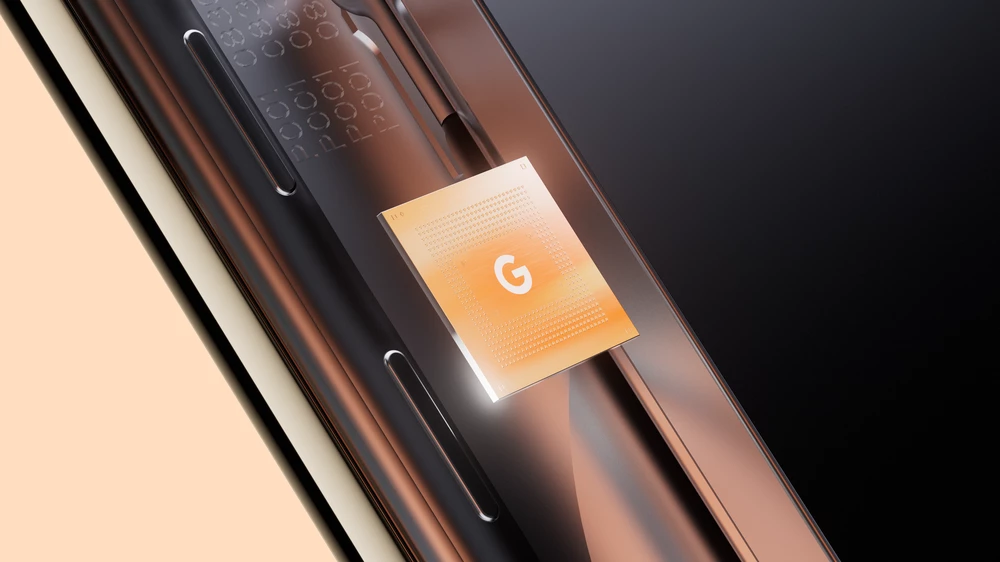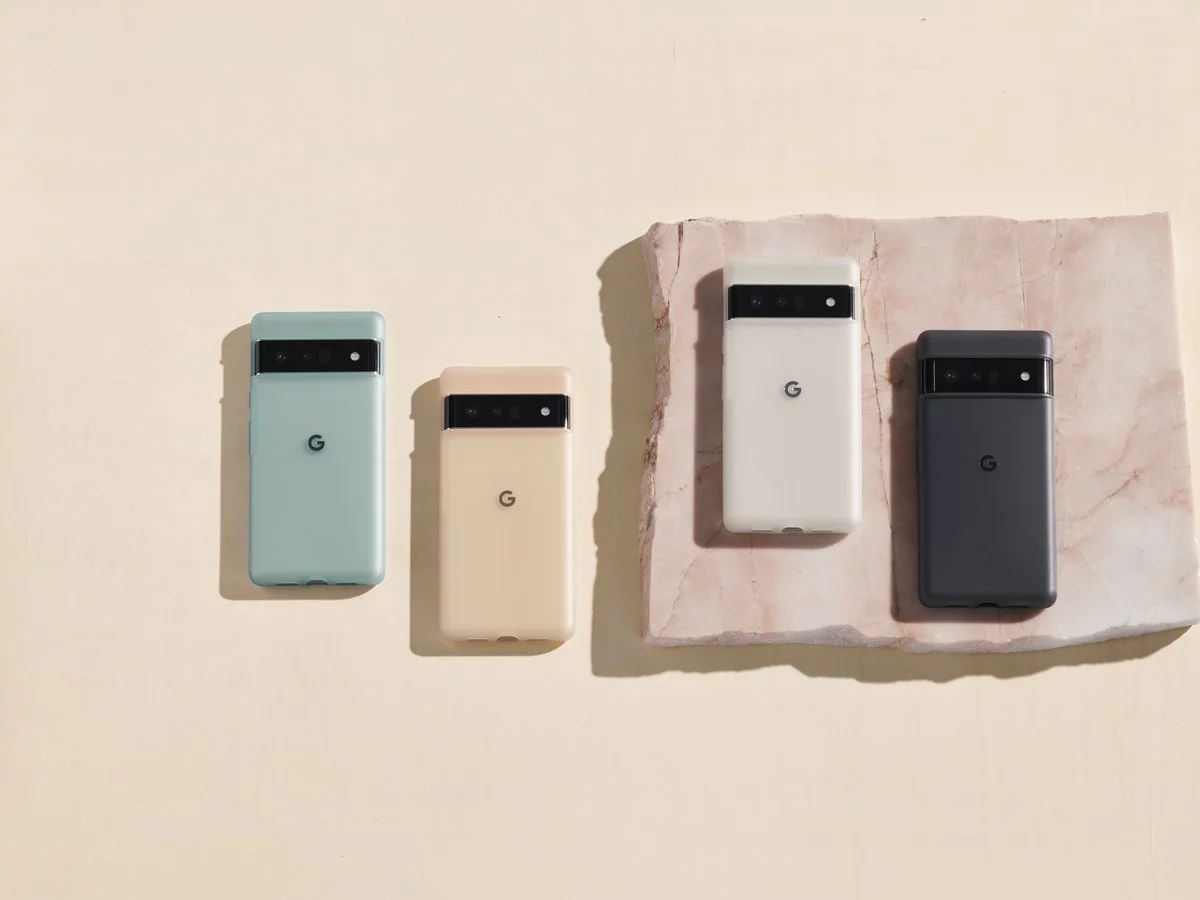Google has finally presented its new Pixel 6 and 6 Pro smartphones, powered for the first time by the company's own Tensor chips. And while they're certainly feature-heavy premium-tier flagships, perhaps the most impressive thing is the price.
The Pixel 5 was frankly a confusing effort; a mid-range, low-cost phone with no big-screen XL version, rather than the premium handset most were expecting. It led some to speculate whether Google had decided to get out of the hardware game altogether – after all, phones have been good enough by most people's standards for a long, long time now and two-yearly upgrades are getting less and less compelling.
But no, Google was re-tooling in preparation for a new flagship, ditching Qualcomm's Snapdragon chips in favor of a new in-house design. And the sixth-gen Pixels do look like they'll deliver what most Pixel buyers want most: premium handsets, with terrific cameras, that run the latest super-clean version of the Android operating system. And that's really the key here: the OS is designed specifically for the phone and the Tensor chip, and no third-party handset manufacturer has troweled its own annoying apps or skins or Bixbies over the top.

Naturally, these will be the fastest and most powerful phones Google has ever built – although since the chip's so new, it'll remain to be seen how it fares against the best of Samsung, Apple et al. It's got built-in AI processing, which will boost some of the neater voice and photography features it's launching, as well as a built-in Titan M2 security core dedicated to making these phones resistant to malicious attacks.
The cameras look terrific, with both models getting a new 1/1.3-inch sensor on the back that's four times the size of the Pixel 5 sensor and captures 150 percent more light for superior shots at night and indoors. There's also a laser detect auto-focus system that should help these things grab the sharpest images possible.

The main camera's a 50-megapixel f/1.85 wide angle, and there's also a 12-megapixel, f/2.2 ultra-wide. The Pro model adds a further 48-megapixel, f/3.5 telephoto camera for a 4x optical zoom and up to 20X using digital super res zoom, as well as an 11.1 mp, f/2.2 ultra-wide selfie camera capable of 4K video – where the regular Pixel 6 has an 8 mp f/2.0 wide camera on the front.
That's some impressive camera hardware, but Google's photographic advantage in the past has been in the software. That continues here with some neat AI-enhanced additions like a "magic eraser," much like Photoshop's content-aware fill, that lets you circle distracting objects or photobombers and remove them from the shot. There's also a Motion mode that cleverly grabs a sharp image of a person but allows the moving background to be motion-blurred for a nice artistic shot, and the AI systems will also do their best to un-blur faces where you're unable to grab a clean frame.
The Pixel team has also taken extra care this time around to train its camera systems with a much more diverse range of human subjects, with improvements to white balance, auto-exposure and image processing that have previously struggled to do justice to darker skin tones.

Another major gig for the AI processing cores is in voice functions. Live transcriptions, live translations in up to 55 languages, voice typing ... these features can be handled quickly and efficiently whether you've got a data connection or not.
This is rolled out in some fun ways with phone calls, too; the phones will listen, for example, to automated answer systems and give you labeled buttons to press instead of making you "press zero to hear the options again." They'll sit and wait when you're on hold, and alert you when a human comes online to talk to you.
In more basic terms, the phones both run smooth, bright, fingerprint-resistant HDR touch-screens, and they're covered front and back with Gorilla Glass Victus. There's a fingerprint reader in the front screen, stereo speakers and three mics for video, speech functions and, well, phone calls if you still do those.
Both phones are bigger than the Pixel 5. The Pixel 6 rocks a 6.4-inch, 90 Hz, 1080 x 2340-pixel screen, while the Pixel 6 Pro is 6.7" and runs its 1440 x 3120 pixel screen at up to 120 Hz. Both claim to run an "all-day" battery, the 6 at 4614 mAh and the Pro at 5,003 mAh. Neither come with a charger, but you can stump up extra for a 30W fast charger or stick them on wireless charge pads or stands.

The 6 Pro runs 12GB of RAM, the 6 just 8GB. Both are available with 128 or 256 GB of onboard storage, and the Pro offers a 512 GB model as well at the top of the line.
The best news here is the price – the Pixel 6 starts at just US$599, and the Pixel 6 Pro starts at $899. That's a hefty undercut to Apple's iPhone 13 Pro Max, which starts at $1,099, and Samsung's Galaxy S21 Ultra, starting at $1,199. It'll be interesting to look at those comparisons in more detail.
So there we go. Google's back in the high-end phone game, and the new Pixel 6 and 6 Pro will probably appeal to a lot of folk (myself included) that are still rocking older Pixel handsets after being left underwhelmed by the Pixel 5.
They're available for pre-order now. Well, they were; after a huge bunfight when the websites went live, the high end Pixel Pros are already mostly sold out in many, if not most, markets. Yippee. It's pretty incredible that huge companies like Google haven't worked out how to deal with high demand for popular products yet. Here's hoping this doesn't turn into a Playstation 5-level shemozzle. Check out a video below.
Product page: Google Pixel 6




